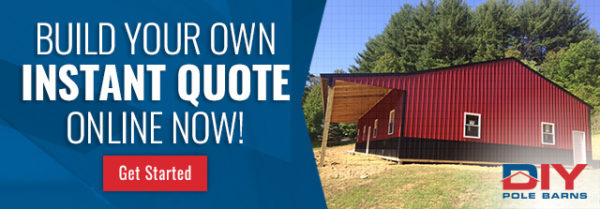High winds have the potential to be devastating. Hurricanes make national headlines with the destruction they can leave in their wake. Of course the East and Gulf Coasts are susceptible to hurricanes, but the Midwest is susceptible to tornadoes and other high winds.
According to Wind-Resistive Design of Wood Buildings, AWC, “Experience has shown that code-compliant wood buildings perform exceedingly well during high wind events such as hurricanes. Wood is strong and most wood-frame buildings offer the advantage of repetitive members and multiple connections, which together create redundant load paths to effectively transfer wind forces from the building envelope to the foundation and soil below.”
Paying attention to the codes determined for your geographical location and the corresponding wind load calculations is important. Understanding the ways in which wind can wreak havoc is important as well. While there is no way to be 100-percent immune to wind damage, there are some steps you can take to build and brace your pole barn against high winds.
Dangers of High Winds on Large Buildings
High winds can cause tilting, overturning or uplift. Uplift refers to the suction created by wind moving parallel to the roof. When this occurs, pressure builds inside a structure and air is directed upward. The force of the uplift increases with the speed of the wind.
Pole barn wind bracing includes careful choice of building location. Additionally, proper orientation of your structure – being sure that the shortest side faces the wind – will reduce damage from winds.
High winds can also throw debris. Isolated buildings, such as if you build a pole barn in the middle of your homestead, are at greater risk. To prepare for high winds, which can easily displace pieces from a fence, remove any loose boards that could create flying debris. Loose roofing should also be secured. Remove dead trees and trim back limbs that could threaten your barn. Don’t overlook loose objects outside such as furniture, planters or trash cans which could also cause damage if they became airborne.
One Weak Link in a Building Can Topple It
Wind damage can create a mechanical or domino effect. If one part of construction fails it can set off a chain of events and likely bring down the entire structure, or at least severely damage it. Inadequate bracing and truss-to-header connections can cause building failure.
The design of modern post-frame construction allows structures to reduce, and often withstand, damage from high winds such as tornados and hurricanes. Standard stick-built construction isn’t always suited well for these high wind situations.
The pole barn posts are embedded, or seated, deeply in the ground which eliminates the connection of walls to the foundation – a weak point of stick built construction. These deeply seated poles are designed to withstand forces of wind that could overturn a building.
How Pole Barn Wind Bracing Works
Pole barns are well-suited for handling high winds. Standard stick-frame construction connects walls at the foundation. The potential for them to be tilted or even forced down is higher as this connection is a weaker link than deep-seated posts.
Additionally, post-frame construction can connect the roof trusses directly to these posts, eliminating another weak link in construction. If stick-frame walls are compromised, their trusses are vulnerable as they are connected to the wall plates.
Construction in high-wind areas can include high-gauge screws or bolts instead of nails. This can help prevent roof loss due to uplift.
Determine Your Wind Risk
Exposure ratings are a building engineer system for determining wind risk based on your area. Three categories are defined by the American Society of Civil Engineers in ASCE 7: Exposures B, C and D. The terrain of an area, the proximity to large areas of water, and proximity to other buildings or hills and mountains all affect the exposure categories.
Generally speaking, Exposure B is rough terrain including wooded areas as well as urban and suburban areas. Exposure C is more open terrain that may be scattered with other buildings or obstructions. Exposure C also includes areas next to oceans in regions that are prone to hurricanes. Smooth, open areas such as mud or salt flats and unbroken ice fall under the Exposure D rating. Areas which are outside of regions prone to hurricanes but are bordering large water surfaces also receive the Exposure D rating.
Remember that the IBC/ASCE recommendations and local building codes are based on the minimum recommendations for your geographic area and terrain. You can exceed building codes but never cut corners. Saving a few dollars up front won’t be worth it in the long run. Learning from what works and what fails through years of engineering, studies and research have gone into ratings for a reason.
Do You Live in an Area with Hurricanes or Tornados?
The local building codes will determine the wind risk category for your area and the exposure rating. Keep in mind that codes are based on the minimum recommendations. At DIY Pole Barns our standard building plans are designed to meet all IBC and BOCA building codes. You can always go above and beyond local building codes depending on your budget and risk tolerance.
Fortunately, pole barns are uniquely suited for stability during tornados or hurricanes. While it is impossible to guarantee safety during a natural disaster, pole barns can be built with their posts seated deeper than the standard 4’. Deeper seated poles will result in a structure that is more resilient to high winds.
In colder climates, this becomes a win-win. The deeper seated poles help ensure the holes for the columns are dug below the frost line, too.
Build Your Pole Barn – Get an Instant Quote Online!
If you’re ready to build your pole barn, lock in a quote with DIY Pole Barns using our Instant Quote tool! Have questions? Call our knowledgeable staff at (937) 547-9100.
Connect with us on social media!




